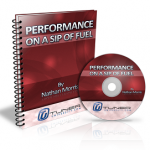Wheels are wheels right? Just pick whatever wheels look sweet on your ride and you’re off. Oh, and the bigger they are – the better, right?
Unfortunately, wheels are one of the major places that many enthusiasts completely ruin their car's potential performance. They have an enormous impact on ride quality, acceleration, handling, and also to a smaller degree, braking.
Choosing the correct size and paying careful attention to weight will improve your car’s ride and ability to tear it up at the track and on the street.
Wheel weight is one factor that many enthusiasts are aware of. However, I still see so many people picking wheels for their car that weigh a LOT. Some enthusiasts select the right wheel, but blow it on the size they chose to run.
Let’s talk about weight first and then we’ll talk about one of the more controversial and surprising topics of wheel size in the next part.
Why does wheel weight matter? Wheel weight, if nothing else, is part of the vehicle’s weight and will need to be carried along with the car’s mass everywhere it goes. It Is one of the cheaper and easier items to change on a car, especially when it comes to weight. It’s free to lose weight by removing items, but replacing components with lighter weight parts is usually expensive. Wheels, are multipurpose items and they can usually be the source of quite a few pounds of weight loss at a much better value than carbon fiber hoods and the like.
They are also a special sort of weight. Wheels turn (obviously) and therefore they are rotational weight. If you pick up a 30lb weight it may feel a little heavy in your hands. However, if you attach that same weight to a piece of chain or rope and begin to swing it, you’ll find out quite quickly that it is much harder to spin a 30lb weight than to simply hold it. It is also requires more and more energy the further out you let that weight slide from you. So, if you spin a 30lb weight on a 2ft piece of chain, it’s a lot easier than even a 3 ft section of chain.
The same goes for your car. A 30lb weight sitting on the floor is easier for your engine to pull down the road than a 30lb spinning wheel is.
It’s not as simple as saying (as some people do) that a lb off the wheels is worth 2x, or even 10x what a lb off the interior of the car is worth. The reasons are complex. For one, the weight of the wheel is distributed over a large area. Some aftermarket wheels have quite a lot of their weight focused at the center of the wheel (at the hub of the wheel), whereas others may have more of their weight focused on the rim of the wheel. It all depends on the material, construction, and style of the rim you’re using.
Also, the weight of the tires and where that weight is relative to the center of the wheel, is also important. We’ll talk more about that when we talk about sizing. For now, just understand that the further the weight is from the center of the wheel, the more it matters.
Now, the wheel is also one other special type of weight, which is UNsprung weight. On your car, there are two types of weight. One is sprung (or held up by the springs), the other is unsprung weight. Which, in most cars includes things like the brakes, the control arms, the wheels, tires, and so forth.
UNsprung weight is another complicated topic so I’ll try to keep it simple for this discussion. As you drive down the road, the road is pushing up and down on the suspension (the car is also doing the same, but let’s save that discussion for high school physics class). Other forces are at work too, when you corner for example, the weight transfer from turning puts a force on the suspension and relieves a force on the opposite side.
The suspension (aptly the springs and shocks) have to control both the weight of the car, and the unsprung components of the car. The lighter either component is, the easier job they have.
When you reduce the wheel weight, for example, whenever a wheel moves, the spring can more easily bring that wheel back to where it needs to be. In effect, it has a similar effect of fitting stiffer suspension springs or dampers. The reason is that the wheel has momentum wherever it’s traveling. Momentum is the objects desire to keep moving in a certain direction unless another force acts upon it.
Momentum is best ‘felt’ or demonstrated by thinking about pushing a light grocery cart and then trying to stop, versus pushing a several hundred pound cart and trying to stop. The heavier object has more momentum and is therefore harder to control.
Handling is all about controlling weight. Sway bars help control weight transfer, springs help control weight transfer, shocks control weight and help absorb shock.
Unfortunately, I don’t have the space to go much deeper here. However, hopefully you’re starting to understand at least at the most basic level why wheel weight is important.
The bottom line is, the lighter your wheels (preferably with the majority of their weight focused at the center of the wheel), the easier your suspension can keep the tires planted firmly on the ground.
Lighter wheels also allow more torque to be available to push the car down the road. Turning a wheel requires TORQUE, so in smaller engines, lighter wheels really do make a difference.
There are two other side effects of lighter wheels that I don’t have time to talk about much here: better gas mileage (in the city only, no effect on highway mileage), better ride quality. The first comes from there being less weight to spin up every time you run through the gears. We’re not talking about huge MPG gains here, but I’ve seen 1-2mpg in the city before on certain vehicles. The other comes from the suspensions ability to respond to road imperfections better, and, the wheels’ weight is less significant so it upsets the chassis less when it moves around. It’s kind of like having a big sack of cement in the trunk versus your laptop – one actually makes the car feel different, the other does not.
Finally, lighter wheels can be stopped faster. In the real world, you may see a slight decrease in stopping distance (as-in, slight), and a slight decrease in the amount of heat you see at the brake rotor due to less energy being absorbed thanks to your lighter wheels.
In closing, whenever choosing parts for the unsprung portion of your car, always try to minimize weight whenever possible. There are some times when an increase in unsprung weight can be warranted, but as a general rule – the lighter, the better.
Next time, we’ll talk about wheel size choice and why that has an enormous impact on your cars handling and acceleration. I’m going to explain why most ‘tuners’ have it wrong when they pick their wheels and how you can avoid their mistakes. We’ll talk about how size choice will effect reliability, handling, grip, and your launch off the line. As a teaser, we’ll talk about why bigger is NOT always better.
I will warn you that the next article is going to going to surprise you as it goes against all advice you’ve probably ever read. However, I do plan to substantiate my claims for you, and I think you’ll find it really interesting.
Please be sure to give me your feedback on this little article. I’d love to hear of your questions, I’ll try to respond to some of them – I can’t promise I’ll get to all of them however.
Like I said last week, I’m going to be working on a braking and handling home study course type of thing in the coming month or so. Please let me know the kinds of things you’d like me to cover, the most burning question you have regarding brakes and suspension, and perhaps your ideas on what the product should even look like/include.
You can leave comments for me here, or e-mail me.
Article Resources:
WheelWeights.net - Weights of many wheels by size/maker/etc.
Extremely Limited Time Offer - 3 Days Only
Get a MASTERS DEGREE in Performance Tuning from the BEST in the Field for ONE low package price
For 3 days only, get ALL of our PREMIUM (not available anywhere else) Tuner University Courses featuring some of the greatest minds in motorsports:
- Top 10 Performance Myths Class (MP3 and Edited Transcript) - $29.95 value
- Performance on a Sip of Fuel Class (MP3 and class manual) - $69.95 value
- Header Design Secrets with John Grudynski (MP3 and transcript) - $69.95 value
- Dirty Secrets of Oil with Ryan Stark (MP3 and transcript) - $69.95 value
- Engine Tuning Secrets with Ben Strader of EFI University (MP3 and Transcript) - $69.95 value
Get all of the above courses (many of which not currently available anywhere else) for one single price of just $309.75 $69.95. A HUGE package savings.
You can also buy any of these individually through our resource center, but I don't know why you would as this is basically the whole store for the price of just 1 course. You'll get the MP3 recordings of each class as well as a transcript or companion manual with each course and you'll be able to download them all INSTANTLY.





